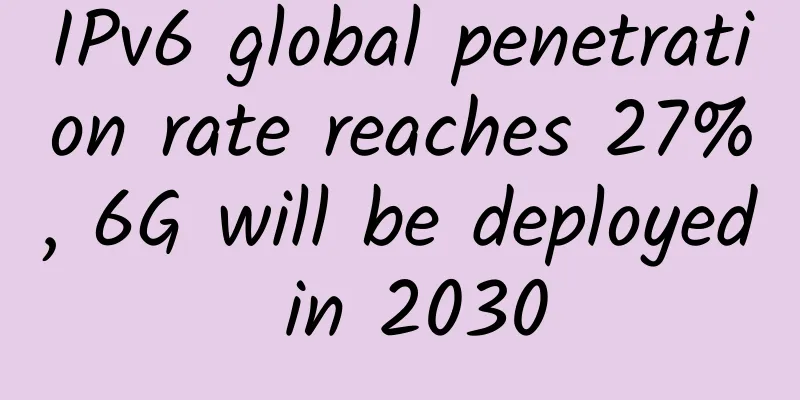From a technical perspective, the development of 5G industrialization will become clear after reading this article

1. Market demandMobile Internet is mainly oriented to people-centered communication, focusing on providing a better user experience. Looking ahead to 2020 and the future, the popularity of ultra-high-definition, 3D and immersive video will drive a significant increase in data rates. Services such as augmented reality, cloud desktops, and online games not only challenge the uplink and downlink data transmission rates, but also put forward stringent requirements for "imperceptible" latency. In the future, a large amount of personal and office data will be stored in the cloud. Massive real-time data interaction requires a transmission rate comparable to that of optical fiber, and will cause traffic pressure on mobile communication networks in hot spots. People are also increasingly demanding communication experience in various application scenarios.
The Internet of Things is mainly aimed at communication between things and between people, and not only involves ordinary individual users, but also covers a large number of different types of industry users. Smart home, smart grid, environmental monitoring, smart agriculture and smart meter reading require the network to support massive device connections and frequent transmission of a large number of small data packets; video surveillance and mobile medical services have high requirements for transmission rates; Internet of Vehicles and industrial control services require millisecond-level latency and nearly 100% reliability. In order to penetrate into more IoT services, 5G should have stronger flexibility and scalability to adapt to massive device connections and diverse user needs. 2. Technical analysis2.1 Typical Business Scenarios The 22nd ITU-RWP5D meeting held by the International Telecommunication Union (ITU) determined that the future 5G has the following three major application scenarios: 1) enhanced mobile broadband (eMBB); 2) ultra-reliable and low-latency communications (uRLLC); 3) massive machine-type communications (mMTC). The MT-2020 (5G) Promotion Group, based on the main application scenarios, business needs and challenges of mobile Internet and the Internet of Things, summarized the main application scenarios of 5G into four main technical scenarios: continuous wide-area coverage, hotspot high-capacity, low-power large connections, and low-latency high reliability, which are basically consistent with the three major application scenarios of the ITU. In June 2015, ITU defined three major application scenarios of 5G future mobile applications as enhanced mobile broadband (eMBB), massive machine type communications (mMTC), and ultra-reliable and low-latency communications (URLLC), and on this basis further expanded the main application scope of 5G to include: smart cities, smart homes, massive Internet of Things, industrial automation, and telemedicine. 2.2 5G NR In view of the future application scenarios of 5G, 3GPP requires that the future 5GNR has the following capabilities: 1. Million terminal connections per square kilometer; 2. User plane latency as low as 1ms; 3. The moving speed reaches over 500km/h; 4. Peak rate reaches 20Gbps/s; 5. The average downlink rate for edge users reaches 100Mbps. To meet diverse business needs, China Telecom's 5G network adopts the SA networking architecture. Compared with the NSA networking architecture, the SA networking will be a brand-new 5G coverage network (brand-new RAN, brand-new core network), which will introduce 5G standard RAN and NGC, and provide all application types defined by 5G, such as: eMBB, uRLLC, mMTC, eV2X and other business types. The 5GSA system networking architecture is as follows: The SA networking architecture uses the 5G core network NGC and the 5G access network NG-RAN. The control plane and user plane transmission between gNB and AMF/UPF are realized through the NG-CU interface, which will provide better service quality. 2.3 NSA/SA The non-standalone network architecture is a new architecture designed to enable operators to quickly deploy 5G networks. Non-standalone network architecture (NSA, None-Standalone): 5G is a network architecture that relies on 4G base stations to work. The NAS signaling (such as registration, authentication, etc.) between the 5G wireless network and the core network is transmitted through the 4G base station, and 5G cannot work independently. Non-standalone networking includes two categories: option 3 and option 7. Option 3 does not require the deployment of NGC, the standard is completed the earliest, and NR can be introduced into the existing network most quickly; the support for 5G services is limited, and uRLLC services cannot be supported; it brings a major upgrade to LTE or EPC; Option 7 introduces NGC and NR at the same time; LTE needs to be upgraded to eLTE to support the related functions of NGC, which involves a large amount of transformation. Standalone (SA) network architecture: Similar to the traditional 2G, 3G and 4G network construction modes, it includes independent core networks and wireless access networks. Standalone networks include two categories: Option 2 and Option 4. Option 2 is the most typical independent networking architecture. 5G is completely independent of 4G, making it easier to implement related functions such as 5G network slicing. Option 4 is similar to an upgraded version of Option 3. 4G needs to be upgraded to Elte, with 5G NR as the signaling plane anchor and 4G as a subcarrier. 5G new air interface, new services and new spectrum, Huawei's self-developed free ray tracing model and large-scale application of Massive MIMO technology have made 5G coverage simulation and planning requirements more complex, which is one of the main challenges for operators to build 5G networks. According to the requirements of 5G precise planning, 5G spectrum consultation and insight, 5G MM site precise planning, uplink and downlink decoupling planning, and how to plan 5G networks based on 4G data, save network construction investment and support subsequent evolution have become the key to 5G network planning solutions. 5G network construction faces multiple goals, multiple product forms, and multiple networking solutions. Operators need to choose excellent solutions to efficiently and cost-effectively build a network to support multiple business scenarios. At present, the 5G SA network architecture is a high-quality networking solution for 5G. 3. Forward-looking layout5G network planning will face more challenges than 4G network. In order to support the construction of high-efficiency and low-cost 5G wireless networks, we will explore 5G network planning in combination with Smart Island 5G. Smart Island is the core area and pilot area of Henan National Big Data Comprehensive Experimental Zone. The industrial and financial ecosystem with the concept of "Smart Island, Fund Island, Innovation Island, Talent Island" has introduced many big data companies. At present, Smart Island has developed advanced industries such as artificial intelligence, autonomous driving, and smart transportation. However, scenarios such as artificial intelligence, autonomous driving, traffic control, remote construction, simultaneous interpretation, and industrial automation require 5G high-speed and low-latency networks, and 5G construction is urgent. 3.1 Site Planning Based on the good 5G ecological industry and numerous business scenarios of Smart Island, the Telecom Branch has planned 15 macro base stations on Smart Island to achieve full coverage of Smart Island 5G network. Based on the existing 4G network, the existing site resources are maximized, 5G is deployed quickly, and construction investment is saved. 3.1.1 Process Discussion The 5G network planning for the smart island is based on the existing 4G site, engineering parameters, network indicators, geographical environment, traffic model, and 5G business requirements. The Smart Island 5G wireless network planning information collection table is output. Based on Huawei's self-developed ray propagation model Rayce, parameter calibration is performed (the high spectrum of 5G leads to a shorter coverage distance, and the reflection/diffraction phenomenon under NLOS has a greater impact on the received signal, requiring a more accurate ray tracing propagation model), Massive MIMO antenna modeling and simulation prediction calculations are used to obtain accurate antenna beams and gains, and parameters and coverage are estimated in combination with a three-dimensional electronic map to output the Smart Island 5G coverage effect map. Five new 5G planning sites are added based on the existing site coverage effect. 3.1.2 Simulation coverage The simulation coverage of the existing 4G network of 10 sites on Smart Island shows an average level of -63.54dBm, and most road coverage remains above -75dbm. For outdoor coverage, the levels of the buildings on the east and west sides of the Patent Office and the northern part of Smart Island are (-140, -95]dBm, which poses a network coverage risk. For indoor coverage, the levels of the buildings on the east and west sides of the Patent Office and Zihu Mansion are (-140, -95]dBm, which poses a perception risk. On the basis of the existing 4G sites on Smart Island, five new sites were added, including Smart Island New 2, Smart Island New 3, and Zhongdao West Road Huxin First Road. A total of 15 sites were planned to simulate coverage effects (based on the simulation effect of 15 Smart Island sites coverage in Figure 7). The average level was -61.37dBm, and the outdoor road coverage was basically maintained above -65dbm. The indoor coverage of most buildings was above -110dbm, forming a continuous coverage area. 3.2 PCI Planning The main principles of 5G PCI planning are as follows: 3.2.1 Avoid PCI Conflicts and Confusion a) Collision-free principle: Adjacent cells cannot be assigned the same PCI. If the same PCI is assigned, the initial cell search in the overlapping area can only be synchronized to one of the cells, but this cell may not be the most suitable one. This situation is called collision. b) Confusion-free principle: Two adjacent cells of a cell cannot be assigned the same PCI. If the same PCI is assigned, if the UE requests a handover, the base station side will not know which is the target cell. This situation is called confusion. 3.2.2 Reduce the impact on network performance a) Based on the design of reference signals and time-frequency positions of each channel in protocol 38.211, in order to reduce the interference of reference signals, it is necessary to support PCI Mod30 planning. b) Some algorithm features require PCI as input. The input of these algorithms is based on PCImod3. The input angle of these algorithms is never changed. PCImod3 is an optional option for PCI planning. It is recommended to plan the cells with these features enabled according to PCImod3. Note: 19A can use GenexCLoud to support 5G PCI offline planning. It is recommended to use MOD3 and MOD30 constraint principles for planning. 3.3 Neighborhood Planning 3.3.1 5G Principles Formulation 1) Neighboring cell function: Neighboring cells are used in mobility, LTE-NR DC and other features and need to be planned in advance 2) Compared with 4G, 5G distinguishes between NSA and SA networking modes. The roles, planning principles and ideas of neighboring cells are the same, but the specifications are different. 3) In the SA scenario, Xn/X2 is not required between NR->LTE base stations, and the N26 interface of the core network is relied on. 3.3.2 5G PRACH root sequence planning 1) Calculate Ncs based on the cell radius 2) According to the 3GPP protocol table, query the Ncs value in the table (slightly larger than Step 1) 3) Calculate the number of leading sequences that a root sequence can generate using Ncs: Num_Preamle = floor((139 or 839)/Ncs) 4) Calculate the number of roots required for a cell: Num_root=ceiling(64/Num_Preamle) 5) Calculate how many root sequence groups can be planned: Num_Group = (138 or 838) / Num_root 6) Root sequence planning based on the obtained reuse After obtaining the wireless parameters according to the above principles, promote the engineering construction department to build and open 5G sites. After the sites are opened and operating normally, promote site service verification tests and road network optimization tests. 3.4 Downtilt Angle Planning 3.4.1 Concepts and definitions The traditional LTE wide-beam cell has only one wide beam, and the downtilt angle is divided into two parts: mechanical downtilt and electrical downtilt. The planning principle of LTE mechanical downtilt + electrical downtilt is that the outer edge of the 3dB beam width covers the cell edge, controls the cell coverage range, and suppresses interference between cells. The 5G MM beam downtilt angle is different from the traditional wide beam of LTE. It is divided into four types: mechanical downtilt, preset electrical downtilt, adjustable electrical downtilt and beam digital downtilt. The final downtilt angle is the result of the combination of the four types. 3.4.2 Coverage differences at different tilt angles 1. Differences in control channel coverage and traffic channel coverage caused by differences in downtilt angles; 2. Adjust the digital tilt angle, only adjust the control channel beam, affect the common channel/control channel coverage, and affect the user's stay in the network; 3. Adjust mechanical downtilt/adjustable electrical downtilt and fixed preset electrical downtilt, and adjust the common beam and service beam at the same time; Definition of 5G downtilt: 1. The vertical normal plane surface envelope 3dB vertical wave width middle pointing; 2. The scenario-based beam downtilt angle of some public channels is adjustable, and the default vertical beam main lobe direction is consistent with the antenna preset electrical downtilt; 3. The downtilt angle of the service channel is consistent with the preset downtilt angle of the antenna; 4. Common beam downtilt angle = mechanical downtilt angle + digital downtilt angle + preset electrical downtilt angle; 5. Business beam downtilt angle = mechanical downtilt angle + preset electrical downtilt angle; 3.4.3 Planning principles Principle 1: Optimal PDSCH coverage and PDSCH tilt; Principle 2: The control channel and the service channel have the same coverage principle. The default control channel inclination angle is consistent with the service channel inclination angle, that is, the digital inclination angle defaults to 0. As an optimization method, the coverage area of the control channel is adjusted; Principle 3: When building a new 5G site, the cell edge should be covered in the direction of the beam with greater gain. When there are multiple layers of beams in the vertical plane, the cell edge should be covered with greater gain in principle. Principle 4: For existing 3G/4G network operators, the proportion of co-sites is very high during pre-planning. The planning principle of LTE downtilt is to cover the cell edge with the outer edge of the beam 3dB width to control the cell coverage and suppress inter-cell interference. For 5G sites, the cell edge is covered in the direction of the beam with larger gain. The planning principle of co-downtilt: 4G mechanical downtilt + electrical downtilt = 5G mechanical downtilt + preset electrical downtilt + adjustable electrical downtilt + beam digital downtilt + 2°; Principle 5: Tilt adjustment priority: design a reasonable preset electrical downtilt -> adjust the adjustable electrical downtilt (not available in 5G RAN1.0) -> adjust the mechanical downtilt -> digital downtilt. 4. Experience Summary5G will begin commercial use in 2020. From an operational perspective, the construction and operation of 5G networks in the future face many challenges. 5G network planning should be carried out first. Relying on the experience of ensuring major 5G events, relevant basic data collection under 5G networking in different frequency bands will provide data support for the study of 5G propagation models, master 5G basic wireless performance and establish a propagation model for 5G planning, laying a solid foundation for large-scale network planning and commercial use in the future. |
>>: Ruizhi Big Data: Injecting Intelligent Genes into Dual-State IT
Recommend
The overall price of 5G mobile phones fell in January 2021
2020 is a year of rapid development of 5G. The sa...
5G development has achieved remarkable results, and the number of terminal connections has exceeded 100 million
On the afternoon of September 22, the State Counc...
After reading this article, you will regret not visiting the exhibition area of Huawei Eco Partner Conference 2019
[51CTO.com original article] After reading this a...
The embarrassment of 5G network: the speed is slower than a year ago, and millimeter wave is difficult to popularize
On May 7, 5G networks, as a new generation of mob...
Aruba Launches ArubaESP, the Industry’s First Cloud-Native Platform for the Intelligent Edge
Aruba, a Hewlett Packard Enterprise company, today...
Sharktech: 1Gbps unlimited traffic high-defense server starting from $79/month, Los Angeles/Denver/Chicago/Netherlands data center
Sharktech, also known as Shark Data Center or SK ...
Juniper Networks' "Survival of the Fittest" in the Cloud Era
"Survival of the fittest" is one of the...
Building the hospital of the future Aruba helps the Children's Hospital of Alabama in the United States transform its digital
Alabama Children's Hospital is a large childr...
UUUVPS: 60 yuan/month-1GB/30GB/4M/Hong Kong CN2 line
UUUVPS is now holding a three-year anniversary ev...
The rise of the NetOps engineer
NetOps, also known as NetDevOps, is the practice ...
5G toB: The next battle between operators and OTT?
In the 5G era, will the battle between operators ...
If you understand long-distance relationships, you will understand how to configure switches.
We have explained the configuration of switches m...
What challenges and opportunities will operator networks face in the 5G era?
With the official commercial use of 5G in China, ...
HostKvm 20% off, Hong Kong CN2 monthly payment starts from US$7.6, 2G memory/40G hard disk/10M bandwidth
HostKvm is launching a 20% discount coupon code t...
Airplanes are all equipped with 5G, so why is the signal on high-speed trains still so poor?
[[403928]] This article is reprinted from the WeC...









